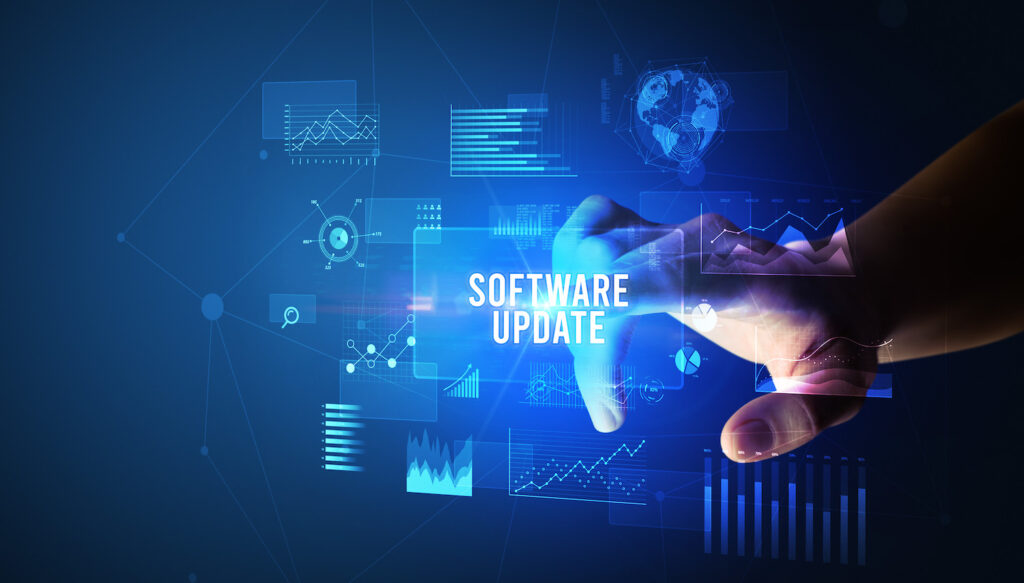WordPress maintenance is often overlooked, yet it remains paramount to the success of any business’s digital marketing initiatives.
Without proper upkeep, websites and blogs can quickly become outdated, difficult to navigate, and even vulnerable to malicious cyber-attacks. Thankfully, modern WordPress website maintenance services allow site owners to outsource their website care, ensuring everything runs smoothly without undue stress or effort.
In this guide, we’re going to cover WordPress maintenance in exhaustive detail, showing you the basics, looking at what types of WordPress maintenance services are available, and showing you how to take the stress out of maintaining your site once and for all. Let’s jump right in!
Keeping Your WordPress Site on Its Toes: Why Maintenance Matters
WordPress maintenance is essential to keep your website running smoothly and securely over a long period of time. When it comes to keeping your website in top condition, neglecting regular upkeep can lead to slow loading speeds, security vulnerabilities, and potential lost leads and revenue along the way. This is even more true with e-commerce websites where an outdated WooCommerce website can lead to lost sales. Regular upkeep ensures your website runs quickly and efficiently, giving your objectives and business goals the competitive edge they need against competitors.
Having a WordPress maintenance plan helps you stay on top of crucial updates, repairs, and backups. Staying current on the latest technology will help ensure your website never falls behind when it comes to security or performance. Additionally, having an expert team managing your website can offer peace of mind as there will always be someone available to respond to any technical issues that may arise.
Neglecting WordPress maintenance can have serious consequences, as hackers are continuously looking for vulnerable sites to exploit and run automated attacks against WordPress websites relentlessly. By not keeping up to date with security updates and squashing potential vulnerabilities before they become a problem, you put your information along with your customer’s personal data at risk of being exposed, leading to irreparable damage to both your site’s reputation and the trust of customers. Ultimately, the importance of website maintenance cannot be overstated; having a good WordPress maintenance plan in place is essential for any successful business looking to remain competitive in our digital age.
The Basics of WordPress Maintenance
Whether you’re just starting to build your online presence or are already running a thriving website, WordPress maintenance is an essential step toward optimizing your site. Basic maintenance helps keep your site running efficiently, improving the user experience and protecting against potential security threats. Understanding the basics of WordPress Maintenance can help ensure your site reaches its loftiest potential, providing the quality of service your readers, prospects, and customers expect and deserve.

Secure Your Site: How to Bolster Security, Backups, and Updates
To keep your WordPress site secure from malicious attacks, having backups of vital data and staying on top of security updates should be an essential part of your website maintenance routine.
Security starts with using a secure hosting environment, implementing best practices for passwords, regularly checking for malicious software, and knowing what you should be on the lookout for regarding hacks, fraud, and malicious activity. Site backups should always be taken on a daily basis so that if anything does go wrong with your site, you have a way to recover the latest version of all of your most critical files. Backups should also be taken redundantly each day and stored in two separate locations to reduce the risk of corrupted backups. Additionally, it’s important to update WordPress core files, plugins, themes, and other components when available to benefit from security enhancements and bug fixes.
Some of the ways you can take action to secure and protect your WordPress site include the following:
- Securing your WordPress login: Create unique usernames and passwords for each user; use a password generator to create secure passwords and change them regularly. Avoid using the word ‘admin’ or ‘user’ in your username to protect against automated attacks that look for these sorts of generic users to run brute force attacks against.
- Staying up to date: Update your WordPress installation, plugins, and themes regularly to get the latest security patches and features. Failure to do so can cause a poor user experience or even worse, malware injection against your visiting users.
- Backing up your site: Set up automated backups of your WordPress files and database, which should be stored in an external storage provider or offsite storage. It is not recommended to store backups where your website resides in case an issue wipes out or corrupts your website, it will not cause harm to your website backups.
- Verifying your Backup Frequency: Develop a daily backup schedule and stick to it. Keep multiple backups of your site’s files, databases, and logs for at least 30 days, if not 90 or 180 days for maximum protection. Routinely test backups by spinning them up in a staging environment to ensure their integrity is intact.
- Hardening WordPress Security: Install and configure safe plugins that offer extra security measures like two-factor authentication and additional login security. Ensure any plugins being installed come from well-known and trusted plugin providers with a solid track record of good security practices and security auditing by third parties.
- Keeping an eye on your website: Monitor your website for any suspicious activity or performance issues, and respond quickly if needed. Likewise, monitor Google Search Console as well as third-party blacklist and anti-virus providers to ensure your website has not been marked due to potentially suspicious activity or the presence of malware.
- Using HTTPS: Encrypt the data you send to and from your site. Install a security certificate to enable HTTPS, the secure version of HTTP. Ensure HTTPS is enforced across the website and ensure all instances of the website URL in content use HTTPS to avoid mixed content warnings and errors.
- Disabling File Editor Access: Disable the ability to edit WordPress files from within the WordPress dashboard to prevent malicious code from being added. Consider, limiting the permissions revolving around the installation and modification of WordPress plugins to only being available when updates need to be made.
The frequency at which each area should be addressed depends on the individual website’s needs. Generally speaking, it’s recommended that WordPress updates be run at least every two weeks, zero-day security vulnerabilities patched immediately, additional security checks be conducted at least once per week, and backups be taken daily as a precaution.
By taking these steps, WordPress administrators can ensure their site is properly protected against most threats. Ultimately, the goal is always to stay one step ahead of attackers and ensure secure, reliable WordPress sites for years to come.
Monitoring and Maintaining Key Aspects of Your WordPress Site
To ensure your website operates optimally, it’s necessary to track how it’s performing and make necessary adjustments routinely. While this can seem daunting at first, understanding a few key principles of monitoring and maintaining your WordPress site can help you maximize its performance.
Here are some of the most important elements to consider when it comes to regular WordPress maintenance.
- Updating WordPress Core: Updating WordPress core is essential for ensuring that you have the latest features, bug fixes, and security patches from the developers behind WordPress, Automattic. WordPress core has a good track record for being very secure, but only if updates are kept up on a regular basis.
- Live Uptime Monitoring: Keep an eye on your important services and hosting servers to ensure they are running optimally; react quickly to any issues that arise. If your website is reporting repeated downtime or shows suspicious content within Google search results, a malware scan should be performed immediately.
- Managing WordPress Plugins & Themes: Installing and configuring plugins and themes to customize your site for maximum efficiency and usability. There is no set number of plugins that are ‘right’, but consider each plugin may increase your website’s potential security risks and may decrease website performance so only install plugins providing actual value to your end user or administering the website.
- Regular Data Backups: Regularly backing up your site’s data will ensure that you always have a copy of your crucial files in case of an unexpected software issue. You should make sure backups are encrypted and should include both files and database tables.
- Database Administrative Tasks: Database optimization, indexing, and other administrative tasks help to ensure that your queries are running efficiently and accurately. This is as simple as routinely running your host’s built-in optimization tools or a third-party WordPress plugin. Make sure to create a database backup prior to running such database modifications as a precaution.
- Performance & Security Monitoring: Performance & security monitoring helps to identify any potential issues with uptime, malware, or other potential incidents. At a minimum, something like Google Search Console, Google Page Speed, and your host’s dashboard will provide some insights into your website’s health. Ideally, consider using a third-party security scanner like Sucuri, Virusdie, Patchstack, or MalCare.
- URL Redirects and Canonicalization: Setting up redirects efficiently and properly canonicalizing links is key to having clean and concise links on your website. Again, monitoring Google Search Console or using third-party tools like SEMRush will help monitor any missing redirects, 404 errors, or canonicalization issues.
- Monitor Website Traffic & Visitors: Use analytics tools like Google Analytics to monitor the amount of traffic your website receives, as well as keep track of visitor statistics, such as time spent on the site and which pages are being accessed. This will provide insights into your user’s behavior and how you may change your website strategy to provide a better user experience for your online visitors.
- Image Compression: Compressing images can help reduce page sizes, leading to faster loading times and improved user experience. Consider serving up now only compressed JPGs, but implementing the next-generation image format called WebP. This will not only provide a faster real-world loading time for end users but may encourage search engine optimization as Google and Bing consider page speed a ranking signal in their algorithm.

WordPress Maintenance Services
As WordPress adoption continues to increase and expand so does the demand for experienced professionals that provide WordPress maintenance services. These specialized services encompass everything from hosting and security to site performance and health monitoring.
If you’re considering outsourcing your WordPress maintenance tasks, it’s important to assess the scope of responsibilities you currently have and determine whether they can be delegated to an expert provider. For instance, if you find yourself often dealing with server downtime or website security breaches, then hiring a specialist may be necessary in order to ensure your site’s long-term stability.
Today, premium WordPress maintenance services are available that offer unbeatable value for money, such as automated backups and updates, 24/7 support, enhanced security measures, ongoing WordPress maintenance support, and performance optimization.
Moreover, expert providers such as Inspry strive to stay at the cutting edge of technology, providing clients with access to the latest features and functionalities, enabling them to remain competitive in their respective industries. For businesses looking to get the most out of their WordPress investment, now is the time to explore premium WordPress maintenance services.
Never Worry About WordPress Maintenance Again: Get Started with an Inspry Plan Today
By keeping your WordPress site up-to-date and secure, you can rest assured that it will serve as a reliable platform to help accomplish all your goals.
Whether you decide to manage the maintenance yourself or enlist services from professionals like Inspry, it’s always worth the extra effort to ensure it’s done right to get the most out of your website. With careful monitoring and maintenance of key aspects of your site, you can keep your WordPress site running smoothly and efficiently for many years to come.
Ready to streamline your WordPress maintenance needs or WooCommerce site maintenance requirements? Let Inspry take over the hassle and headache, so you can focus on what matters most – running your business. With plans designed specifically for WordPress, our services include site health audits, regular updates and backups, performance reviews, and more. Take back your time and invest in the future of your site with Inspry’s expert WordPress maintenance care.
Get started with Inspry’s WordPress Maintenance Plans today, and let us help bring success to your online business.
